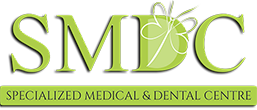LINGUAL BRACES
Orthodontic Treatment
LINGUAL BRACES
Braces are one of the safest and most effective ways to improve your smile. Children and Adults alike can benefit from the use of braces in combating several common dental conditions. These include; teeth that are misaligned (also known as malocclusion) over or, under bite, cross bite and teeth which are excessively crowded together or spaced too far apart. The benefits of braces don’t stop at the purely cosmetic, but can improve your overall dental health by reducing the amount of stress which is placed on your jaw and gums. Traditional braces are made from metal wires and brackets which are placed on the front of your upper and lower teeth. Due to this, some people who could benefit from braces are put off by having to wear such obvious and ugly equipment for extended periods. Fortunately, there’s now more options for orthodontal treatment than ever before and in cases such as this there’s now the option of lingual braces.

WHAT ARE LINGUAL BRACES?
Lingual braces work in much the same way as their traditional counterparts. However there’s one important cosmetic difference; the lack of the usual metal supports on the front of your teeth. In the past braces could only be fit in a certain position; right on the front of your teeth but due to developments in dental technology this is no longer the case. The key difference with Lingual Braces is that they can be placed on the rear of your teeth, hiding the majority of the metal parts. This means that they can realign your teeth just as effectively as a traditional brace but without the aesthetic worries.
HOW ARE LINGUAL BRACES FIT?
Firstly, our dentist will need you to press your teeth into a mould in order to take an impression of them. This mould is then sent off to a specialist laboratory where each bracket in your lingual brace is custom made to fit your teeth. In order to help the brackets remain in the correct shape they are usually set in wax and kept safely inside a plastic applicator. During your follow-up visit your dentist will transfer the brackets to the back of your teeth and cement them in place. It’s usual to have several follow up visits with your dentist in order to monitor your progress. Lingual braces have several advantages over their traditional counterparts. The main advantage is cosmetic, as Lingual braces aren’t visible from the front which makes them an excellent option for patients who wish to avoid the highly-visible traditional braces. In addition to being completely invisible, your lingual braces will strengthen and realign your teeth in the same time frame as traditional braces (which can vary from case to case but usually requires braces to be worn for a number of months). In many cases traditional braces aren’t suited to patients who play contact sports or certain wind instruments making Lingual braces the safest and most convenient option. Lingual braces can be used on patients of any age (as opposed to other types of invisible brace which have to be used early on in life) and are increasingly popular in older patients who want dental treatment without the orthodontic equipment interfering with their day to day life. Also, lingual braces can be a great alternative to patients who are sensitive to plastic and as such, can’t use any invisible braces made of it.
WHAT’S IT LIKE LIVING WITH LINGUAL BRACES?
As not all orthodontists are trained in the use of Lingual braces there can be some issues which occur with access to treatment for follow-up visits. Wearing any kind of brace will have some effect on certain parts of your lifestyle and in addition, lingual braces usually tend to cost more than their traditional counterparts. This is due to the fact that the treatment requires specialist training, customised brackets and computer-aided design technology. Therefore it’s important to take all these factors into consideration and discuss them with your dentist before deciding to have the treatment. As lingual braces are placed on the inside surface of your teeth, they may take a while longer to adjust to than traditional braces. There can be issues with food getting trapped and catching your tongue on the brace but most patients fully adapt to having the brace within a few days. Patients with lingual braces can eat relatively normally but it’s important to avoid certain foods and snacks such as chewing gum or sticky toffee. Similarly it’s important to avoid hard foods and fizzy drinks and in some cases an excess of fruit juice can also cause damage your braces. It’s usual for your dentist to advise regular visits to the hygienist as it’s easier for food to become trapped in lingual braces, due to their position. Lingual braces may affect your speech and some patients develop a slight lisp or have problems forming certain words but this is usually temporary. It may be necessary at some stage of the treatment to be assigned some extra dental gear to wear in the evenings or at night in order to provide extra pressure to your teeth to help them move in the right way. After the initial treatment period is finished you’re usually required to carry on using a retaining brace so your teeth won’t revert to their former position. This can either be fixed or removable and the length of time you’ll need to use this for varies greatly from case to case. Most patients wear braces for between 1 to 3 years before a positive result is achieved.
WHAT RESULTS CAN I EXPECT?
Your lingual brace will help aid your teeth to grow straight by applying small but continuous pressure to your teeth. After treatment you should see a noticeable cosmetic difference in the appearance of your teeth and any problems with crowding, gaps, overbites or under bites should be fixed.


 Open Chat
Open Chat

